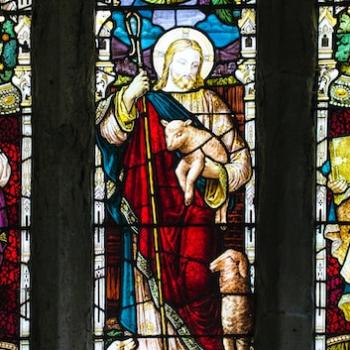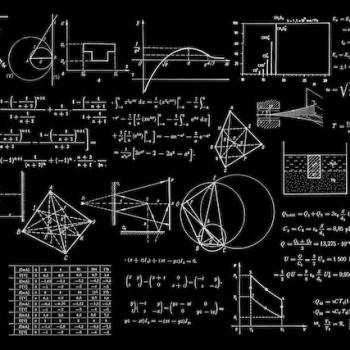
I loved last Sunday’s readings, with their clever connective tissue and delicate wisdom. I hate this week’s readings with a white hot passion. The first line of the first reading says it all. “The LORD was pleased to crush him in infirmity” (Isaiah 53: 10). Then in the second reading, Paul references the sacrifice Jesus made echoing Isaiah’s prophecy when he calls him the “one who has similarly been tested in every way” (Hebrews 4: 15). Finally, in the gospel reading, Jesus challenges the childish put-me-first questions from James and John by foreshadowing the sacrifice of his own death. “Jesus said to them, ‘You do not know what you are asking. Can you drink the cup that I drink or be baptized with the baptism with which I am baptized’”(Mark 10: 38)?
So, we’re supposed to believe in a God who is pleased to destroy that which God loves? No, thanks. I’ll pass.
Context Matters
I believe that the early church needed to understand its experience of Jesus through the lens of their Jewish faith and cultural context. We humans tend to create God in our own image, and the Jews of Jesus’ time were no different. Influenced by the Hellenic practice of sacrifice to numerous, often petulant, always selfish gods, animal sacrifice was a common form of religious devotion.
In this way, it made sense that the God of Abraham and Moses seemed to require sacrificial offerings. Important Jewish feasts highlight the centrality of sacrifice. The Passover holiday celebrates the Israelites freedom from slavery in Egypt. After the Pharaoh refuses Moses’ repeated requests to let his people be free, God sends a series of plagues to coax the Egyptian leader to change his mind, much like a mob boss sends Guido first and Bugsy later to pay some hard-knuckled visits to the poor schmuck in debt up to his eyebrows.
Angels Really Do That?
In the last plague, God sends the “angel of death” to kill the firstborn son of every family. But he throws the Israelites a lifeline by telling them to put the blood of a sacrificed lamb over their doors. This inoculates them against the killings that Egyptian families experience and make the Exodus possible. This Passover celebration is the backdrop for Jesus’ Last Super before his death.
And if Passover doesn’t make the central role of sacrifice clear enough, Yom Kippur, the holiest of all day for Jews, certainly does. This “Day of Atonement” is the culmination of the “10 Days of Awe” that follow the Rosh Hashanah, the Jewish New Year. According to tradition, Jews believe that God decides the fate of each person on Yom Kippur, so the observance centers around atoning for past failures through repentance, fasting, and prayer. Atonement rituals recall the Israelites’ transfer of their sins to a goat who is then let into the wild to be devoured by prey. It’s where the term “scapegoat” originally comes from. It’s also the sacred, ceremonial version of little Joey engaging in good behavior for the 10 days leading up to the night Santa is scheduled to visit. No putting gum in little sister’s hair, no refusing to make his bed, all in hopes of avoiding assignment to the “naughty list.”
Against this backdrop, the theory of substitutionary atonement makes sense . . . but only if God is a vindictive despot more interested in punishment than compassion, more concerned about the concentration of power than the transformation of hearts and minds. I simply can’t stomach this understanding of the Divine.
Needing a Bigger Size
Perhaps we’ve outgrown this understanding of religious faith. Or, maybe “outgrown” isn’t the right word. It’s more like wearing a shirt that fits just fine . . . until you spend too much time on the beach wearing too little sunscreen. When you pull that same shirt over your shoulders, singed and throbbing, you wish it were three sizes larger. My desire to understand that which cannot be understood has inflicted second degree burns. That, plus what I’ve learned about the world through my own lived experience and the truths of established science has aided the blistering. Fortunately, soteriological theories, those about the nature of salvation, are many and varied. There are lots of different ways to understand the reality of Jesus. They just aren’t the usual currency of those who identify as traditionally “religious.”
I live with a dull, ulcerous ache in my gut about all of this. On good days, I have the audacity to believe that maybe I was put on this earth to help bridge the gap between the confinement of atonement theories and the freedom of a more expansive Christology. On my bad days, I’m pissed that I am not smart enough to understand it all or convey my limited understanding clearly enough. In many ways, I’m little Joey hoping that if I keep thinking and reading and writing, Santa might bring me a new way to make it all work in my head and heart and pen.
But then, I don’t believe in Santa Claus as a literal package-toting, sleigh-driving guy. So, ya know, there’s that.











